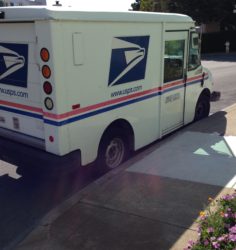 The dead letter office is no more. First established in 1825 to deal with illegible handwriting, damaged or separated items, incorrectly addressed mail and more, 55 regional dead letter offices, or mail recovery centers, existed at one time to decipher the mysteries of misplaced mail. These dead letter offices operated for nearly 190 years, with postal service staff serving as mail detectives to reunite people with their mail.
The dead letter office is no more. First established in 1825 to deal with illegible handwriting, damaged or separated items, incorrectly addressed mail and more, 55 regional dead letter offices, or mail recovery centers, existed at one time to decipher the mysteries of misplaced mail. These dead letter offices operated for nearly 190 years, with postal service staff serving as mail detectives to reunite people with their mail.
One such center, the Mail Recovery Center in Atlanta, Georgia, still performs this function today, but times have changed, and not only in name. While the mail detectives have been largely replaced by technology, it seems that so too have gone the intriguing stories of lost treasures found in the mail.
Vera Rodriguez Schneider, a native of Minnesota who worked at the U.S. Postal Service’s Mail Recovery Center in St. Paul, spoke with Smithsonian Magazine in 2000. Vera was one of a handful of the postal sleuths in St. Paul authorized to open mail to try to reunite lost items with their rightful owners.
“One time I found a diamond-and-gold brooch postmarked from Missouri but with no ‘To’ or ‘From’ address,” she noted. “(there was) a note inside saying, ‘This was my mother’s wedding gift from my father in 1898.’” The true owner of the brooch was one of the mysteries that sadly remained unsolved, despite months of posting and searching.
 The story of a lost Super Bowl ring had a better outcome. Sent out for resizing, the return address label from the package containing the ring fell off. Vera Schneider and her colleagues tracked down the happy football hero and returned the ring to its owner.
The story of a lost Super Bowl ring had a better outcome. Sent out for resizing, the return address label from the package containing the ring fell off. Vera Schneider and her colleagues tracked down the happy football hero and returned the ring to its owner.
At the height of the days of the regional dead letter office in 1997, the centers processed about 19 billion images of pieces of mail annually. Postal data conversion operators viewed scanned images of scribbled addresses that machines were unable to read on computer screens and matched the envelopes with the most likely address from a list of possible addresses.
Scanning technology improved, however, rendering most of the centers obsolete. According to the New York Times (May 4, 2013), “the Postal Service has become the world leader in optical character recognition…(with) equipment that can read nearly 98 percent of all hand-addressed mail of 99.5 percent of machine-addressed pieces.”
That said, “bad handwriting, water damage, archaic fonts and those plastic windows on letters all cause trouble for the computers,” according to Smithsonian Magazine in a December 2015 article titled “Have Bad Handwriting? the Postal Service Has Your Back.”
According to Smithsonian, “The U.S. Postal Service has a massive 78,000-square-foot branch tucked away in the Utah capital that deciphers illegible addresses.” The Remote Encoding Center in Salt Lake City has a high rate of success in decoding unique or illegible handwriting. “On a normal day, about 5 million pieces of mail are funneled through this branch, but as it creeps closer to December the number can be as high as 11 million.” When the Center is unable to match a piece of mail with the correct address, the letter is then sent to the Mail Recovery Center in Atlanta.
Sarah Ninivaggi, a spokesperson for the U.S. Postal Service in Washington, DC, said that “damaged, undeliverable and unclaimed loose in the mail items processed and held at the Mail Recovery Center (MRC) are scanned by an automated system to determine if they contain items of value, such as checks or money orders… (such) Items are generally held for 30 days to six months, depending on their retention category.”
While the USPS makes every effort to return items to their owners, we all need to do our part. Address those envelopes properly!
“The best way to ensure the prompt return of undeliverable mail is to always include a return address on every piece of mail that is sent,” said Ms. Ninivaggi.
Sources:
Last of a Breed: Postal Workers Who Decipher Bad Addresses. The New York Times, May 4, 2013.
No Return Address by Sue Allison. Smithsonian Magazine, July 2000.
Bad Handwriting? The US Postal System Has Your Back. Smithsonian Magazine, Dec. 15, 2015 Magazine
USPS Press Office, Washington, D.C.




